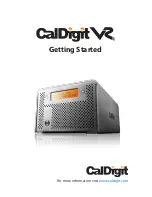
The following table lists SRDF common operations and features and whether they are
supported in SRDF groups during SRDF migration-only environments.
Table 45 Limitations of the migration-only mode
SRDF operations or features
Whether supported during
migration
R2 to R1 copy
Only for device rebuild from un-
rebuildable RAID group failures.
Failover, failback, domino
Not supported
SRDF/Star
Not supported
SRDF/A features: (DSE, Consistency Group, ECA,
MSC)
Not supported
Dynamic SRDF operations: (Create/delete/move
SRDF pairs, R1/R2 personality swap)
Not supported
TimeFinder operations
Only on R1
Online configuration change or upgrade
l
If online upgrade or configuration
changes affect the group or devices
being migrated, migration must be
suspended prior to the upgrade or
configuration changes.
l
If the changes do not affect the
migration group, they are allowed
without suspending migration.
Out-of-family Non-Disruptive Upgrade (NDU)
Not supported
Space and zero-space reclamation
Space reclamation reclaims unused space following a replication or migration activity
from a regular device to a thin device in which software tools, such as Open Replicator
and Open Migrator, copied-all-zero, unused space to a target thin volume.
Space reclamation deallocates data chunks that contain all zeros. Space reclamation is
most effective for migrations from standard, fully provisioned devices to thin devices.
Space reclamation is non-disruptive and can be executed while the targeted thin
device is fully available to operating systems and applications.
Zero-space reclamations provides instant zero detection during Open Replicator and
SRDF migration operations by reclaiming all-zero space, including both host-unwritten
extents (or chunks) and chunks that contain all zeros due to file system or database
formatting.
Solutions Enabler and Unisphere for VMAX can be used to initiate and monitor the
space reclamation process.
Data migration solutions for mainframe environments
For mainframe environments, z/OS Migrator provides non-disruptive migration from
any vendor storage to VMAX arrays. z/OS Migrator can also migrate data from one
VMAX array to another. With z/OS Migrator, you can:
Data Migration
176
Product Guide
VMAX 100K, VMAX 200K, VMAX 400K with HYPERMAX OS
Summary of Contents for VMAX 100K
Page 1: ...EMC VMAX3 Family Product Guide VMAX 100K VMAX 200K VMAX 400K with HYPERMAX OS REVISION 6 5 ...
Page 20: ...Preface 20 Product Guide VMAX 100K VMAX 200K VMAX 400K with HYPERMAX OS ...
Page 46: ...VMAX3 with HYPERMAX OS 46 Product Guide VMAX 100K VMAX 200K VMAX 400K with HYPERMAX OS ...
Page 72: ...Open systems features 72 Product Guide VMAX 100K VMAX 200K VMAX 400K with HYPERMAX OS ...
Page 82: ...Provisioning 82 Product Guide VMAX 100K VMAX 200K VMAX 400K with HYPERMAX OS ...
Page 158: ...Remote replication solutions 158 Product Guide VMAX 100K VMAX 200K VMAX 400K with HYPERMAX OS ...
Page 186: ...Mainframe Error Reporting 186 Product Guide VMAX 100K VMAX 200K VMAX 400K with HYPERMAX OS ...
Page 200: ...Licensing 200 Product Guide VMAX 100K VMAX 200K VMAX 400K with HYPERMAX OS ...
















































